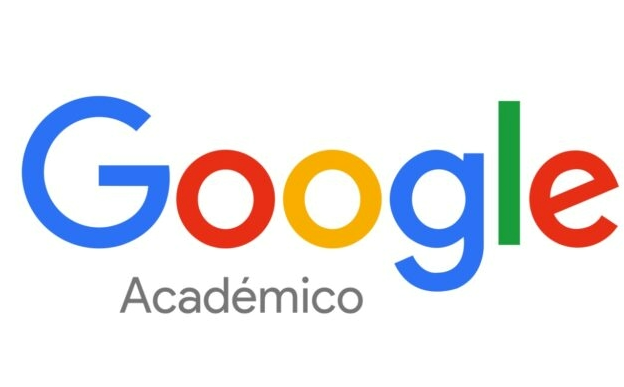Triangulación metodológica cualitativa y cuantitativa
DOI:
https://doi.org/10.70833/rseisa14item276Palabras clave:
Triangulación, Cualitativo, Cuantitativa, MétodoResumen
En este trabajo se abordan las características de la triangulación metodológica cualitativas y cuantitativas presentando las particularidades que deben cumplir en cuanto a la combinación de estas en diferentes áreas de las ciencias. Se describe cómo utilizarlas en variados contextos de tal manera de enriquecer la investigación desde varios enfoques y haciendo que el resultado sea más contundente.
Descargas
Citas
Altrichter, H., Feldman, A., Posch, P. & Somekh, B. (2008). Teachers investigate their work; An introduction to action research across the professions. London: Routledge.
Arias Valencia, M. M. (2000). La triangulación metodológica: sus principios, alcances y limitaciones. Investigación y Educación en Enfermería, 18(1), 13-26.
Alzas, García . (2017) La Evolución del concepto de Triangulación en la Investigación Social Revista Pesquisa Qualitativa. São Paulo (SP), v.5, n.8, p. 395-418, ago. 20
Denzin, Norman K. (1973). The act of research: a teorética Introduction to Sociological methods. New Jersey: Transaction Editors.
Campbell, d. T.; Fiske, d. (1959) Convergent and Discriminant Validation by the Multitrait Multimethod Matrix. Psychological Bulletin, Champaign, v.2, n 56, p. 81-105, mar.
Cea, M. A. (2001). Metodología cuantitativa: estrategias y técnicas de investigación social. Madrid: Editorial Síntesis.
Charres, H (2018) Triangulación: Una estrategia adecuada para las investigaciones en las ciencias administrativas y contables en la educación superior. http://portal.amelica.org/ameli/jatsRepo/226/2261046009/html/
Cohen, L.; Manion (1990) L. Métodos de investigación educativa. Madrid: Muralla.
Cowman, S. (1993) Triangulation: a means of reconciliation in nursing research. Journal of Acvanced Nursing.
Erazo, M (2011) Rigor científico en las prácticas de investigación cualitativa. Ciencia, Docencia y Tecnología, Entre Ríos, v. 22, n. 42, p. 107-137, mayo, 2011.
Gray and Salzman. (1998), Damaged Merchandise. Human-Computer Interaction. 204-252.
Gribbin, J. (2008) The Universe: A Biography. Penguin
Johnson, R. B.; Onwuegbuzie, A. J.; Turner, L. A. (2007): «Toward a Definition of Mixed Methods Research», Journal of Mixed Methods Research, 1(2), pp. 112-133.
Konecki, Krzysztof T, (2008) “Grounded Theory and Serendipity. Natural History of a Research”, Qualitative Sociology Review, Vol. IV, Issue 1
Marradi, A, Archenti N y Piovani J. (2008) Metodologías de las ciencias sociales. Buenos Aires, Emece.
Mitchell, Ellen S. 1986. "Multiple Triangulation: A Methodology for Nursing Science." Advances in Nursing Science 8 (3):18-26.
Miles, M. y Huberman, A.M. (1984). Qualitative data analysis. A source book of new methods, Beverly Hills, Sage.
Mwaniki Celestine Ndanu & Mue Jacinta Syombua (2015). Mixed Methods Research: The Hidden Cracks of the Triangulation Design. General Education Journal, No. 4. Mount Meru University Research. Issue 2. Pages 46-67
Finol de Franco, Mineira (2009). La triangulación como procedimiento de análisis para investigaciones educativas. REDHECS : Revista electrónica de Humanidades, Educación y Comunicación Social. Año 4, Nº. 7, 2009, págs. 117-133.
Fusch, P., & Ness, L. (2015). Are we there yet? Data saturation in qualitative research. The Qualitative Report, 20, 1408–1416. Retrieved from http://tqr.nova.edu/wpcontent/uploads/2015/09/fusch
Okuda, M. y Gómez-Restrepo, C. (2005). Métodos en investigación cualitativa: triangulación. Revista Colombiana de Psiquiatría, 34(1), 118-124.
Olsen, W. (2004): "Triangulation in Social Research: Qualitative and Quantitative Methods Can Really be Mixed". En: HOLBORN, M.: Development in Sociology. Causeway Press (En prensa).
Oppermann, M. (2000). Triangulation - A Methodological discussion. International
Journal of Tourism Research. Vol. 2. N. 2. pp. 141-146.
Paul, J. (1996). Between Method Triangulation. The International Journal of Organizational
Analysis, 4(2), 135-153.
Descargas
Publicado
Cómo citar
Número
Sección
Categorías
Licencia
Derechos de autor 2021 Jiménez Chaves

Esta obra está bajo una licencia internacional Creative Commons Atribución 4.0.
Licencia de Atribución Creative Commons CC-BY
Usted es libre de:
Compartir — copiar y redistribuir el material en cualquier medio o formato.
Adaptar — remezclar, transformar y construir a partir del material para cualquier propósito, incluso comercialmente.
Bajo los siguientes términos:
Atribución — Usted debe dar crédito de manera adecuada, brindar un enlace a la licencia, e indicar si se han realizado cambios. Puede hacerlo en cualquier forma razonable, pero no de forma tal que sugiera que usted o su uso tienen el apoyo de la licenciante.










